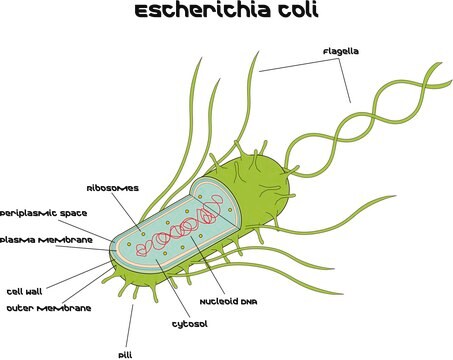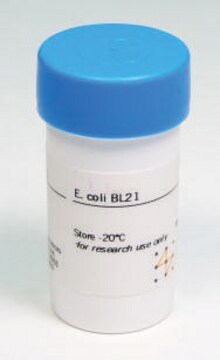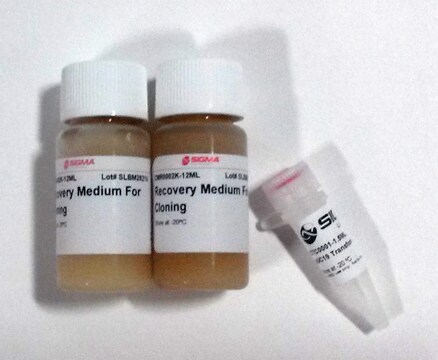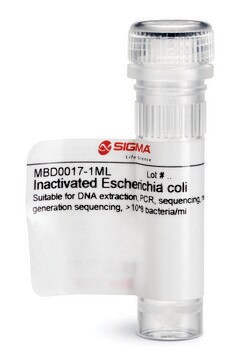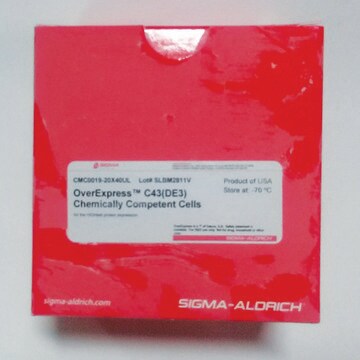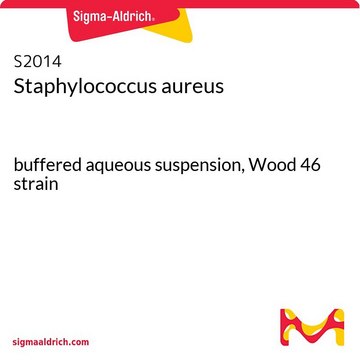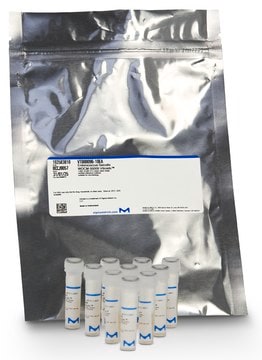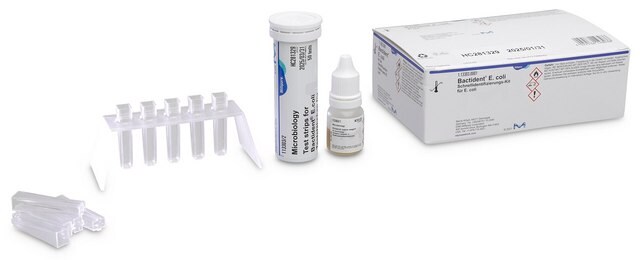EC1
Escherichia coli
Strain K12, lyophilized cells
Synonym(s):
E. coli K-12
Sign Into View Organizational & Contract Pricing
All Photos(1)
About This Item
Recommended Products
Quality Level
sterility
non-sterile (not processed or packaged aseptically)
form
lyophilized cells
suitability
not intended for starter culture
storage temp.
−20°C
Looking for similar products? Visit Product Comparison Guide
General description
Escherichia coli (E.coli) is a non-spore forming, Gram-negative, rod-shaped facultative anerobe, which is found in the human gastrointestinal tract. It belongs to the family of Enterobacteriaceae. E.coli is chemoorganotrophic and grows at 37°C. Pathogenic E.coli strains is associated with diarrhea, septicemia, meningitis and urinary tract infections. It inhibits the colonization of the gut by harmful bacteria. E.coli acts as an indicator of fecal contamination.
Other Notes
A mutant which is rich in alkaline phosphatase.
Storage Class
11 - Combustible Solids
wgk_germany
WGK 3
flash_point_f
Not applicable
flash_point_c
Not applicable
ppe
Eyeshields, Gloves, type N95 (US)
Certificates of Analysis (COA)
Search for Certificates of Analysis (COA) by entering the products Lot/Batch Number. Lot and Batch Numbers can be found on a product’s label following the words ‘Lot’ or ‘Batch’.
Already Own This Product?
Find documentation for the products that you have recently purchased in the Document Library.
Foodborne Pathogens: Microbiology and Molecular Biology (2005)
Pablo Gallay et al.
Biosensors & bioelectronics, 148, 111764-111764 (2019-11-11)
We are reporting an original supramolecular architecture based on a rationally designed new nanohybrid with enhanced peroxidase-like activity and site-specific biorecognition properties using avidin-functionalized multi-walled carbon nanotubes (MWCNTs-Av) and Ru nanoparticles (RuNPs). The nanohybrid-electrochemical interface was obtained by drop-coating of
Multiple antibiotic resistance indexing of Escherichia coli to identify high-risk sources of fecal contamination of foods.
Krumperman PH, et al.
Applied and Environmental Microbiology, 46(1), 165-170 (1983)
Min-Hui Zhao et al.
Biosensors & bioelectronics, 150, 111865-111865 (2019-11-20)
We develop a low-background electrochemical biosensor for one-step detection of uracil DNA glycosylase (UDG) based on the host-guest interaction and iron-embedded nitrogen-rich carbon nanotube (Fe-N-C) that mimics enzyme-mediated electrocatalysis to achieve signal amplification. In this work, Fe-N-C is initially immobilized
Tássia Silva Tavares et al.
Molecules (Basel, Switzerland), 25(2) (2020-01-16)
Owing to their high surface area, stability, and functional groups on the surface, iron oxide hydroxide nanoparticles have attracted attention as enzymatic support. In this work, a chemometric approach was performed, aiming at the optimization of the horseradish peroxidase (HRP)
Our team of scientists has experience in all areas of research including Life Science, Material Science, Chemical Synthesis, Chromatography, Analytical and many others.
Contact Technical Service